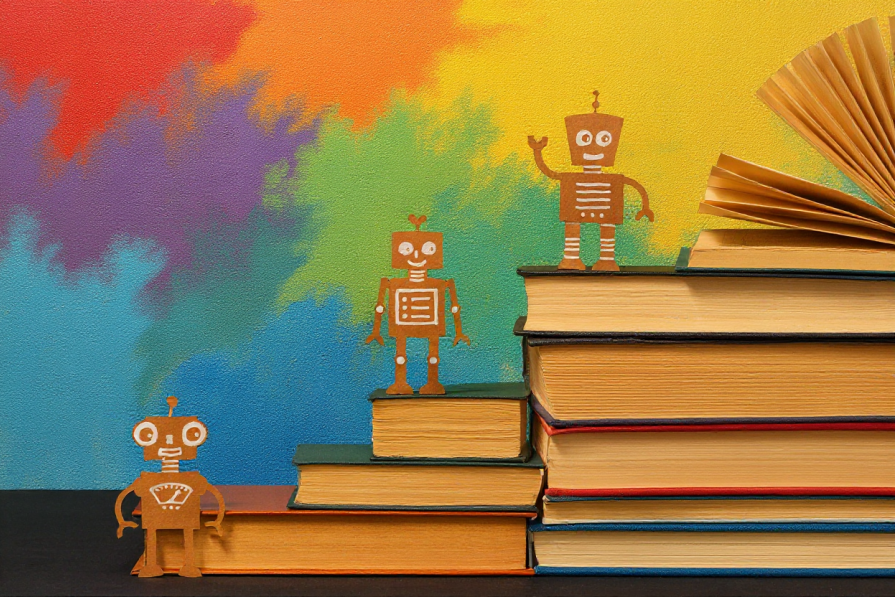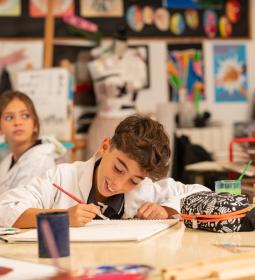What AI assistants can already do in schools and universities
Over the past couple of years, the word "neural network" has been heard more and more often in education. If earlier this was talked about in the future, now many teachers have already managed to test new technologies in their work. Teachers who actively follow the development of technology note that the key advantage of AI is that it is able to relieve teachers of a lot of routine duties. Already today, there are systems that help to form curricula, select materials for lessons, check homework and track progress, and with each update, such assistants become more accurate and faster. It's not that they will replace a live teacher, but that they will give you the opportunity to focus on what is really important — live communication with students and work with their motivation.
There is another significant advantage — interactivity. Thanks to AI, it has become easier to use multimedia and immersive learning formats: for example, to create simulators and simulations where schoolchildren and students can practice skills in as close to real conditions as possible. This is especially important where it is simply dangerous to let an inexperienced student go to a real object. In the development of so-called soft skills (such as public speaking), such solutions are also used: it is much easier to practice communicating with a neural network than to immediately go to a real audience.

Why do teachers need time liberated by AI?
If some of the routine tasks can be entrusted to machines, a natural question arises - what to do with the freed up time? Experts agree: these are hours and days that are worth spending on live, attentive communication with students! Ironically, this is where the main resource lies, which educational systems have always lacked.
The future of effective education is not in individual neural network tutors who will select a personal lesson plan for each student, but in the fact that teachers, getting rid of mechanical checking of tests and endless preparation of the same type of materials, will be able to work more with the motivation, involvement and personal requests of students. Personalization as an idea has been floating around in educational circles for a long time, but only with the advent of affordable AI tools did it begin to take real shape. Experts warn: no neural network can replace a live mentor who is able to see in a student what he himself is not yet aware of. Machines are able to analyze what they have been told, but only humans can understand hidden motives, desires, and fears.
What will the teacher of the future be like?
Modern teachers will have to solve two problems at the same time. On the one hand, it is necessary to master new tools based on neural networks, which will require technical flexibility and a willingness to learn in an unusual field for yourself. On the other hand, it is necessary to develop the skills of involvement, empathy, mentoring, without which a modern teacher simply will not be able to be effective in the future.
After all, if earlier, especially in universities, the teacher could limit himself to a dry presentation of the material, today this is no longer enough. AI is able to provide any information in a second, which means that the value of a teacher is in something else – in the ability to organize an interesting practice, involve, support, inspire.
Some teachers, especially older ones working in the traditional system, may be skeptical about such changes, but it is useless to resist: generative neural networks are already being introduced, and their use in education is a matter of the next few years.

How to deal with "AI plagiarism"
Skepticism in society about neural networks, especially among parents and some teachers, is based on the fear that schoolchildren and students will stop thinking for themselves. In a recent survey, nearly a third of participants admitted that they see AI as a threat to children's mental development.
However, experts are sure that the problem is not in the technologies, but in how they are used. Now there is a situation where students actively use AI in their studies, and teachers often find themselves on the sidelines. Meanwhile, it is teachers, with their experience and professional training, who are able to implement neural networks in the educational process much more effectively!
Experts believe that it is simply useless to prohibit students from accessing neural networks. It is much more productive to change the format of the tasks: for example, instead of a classic essay, you can ask the student questions on the topic to several people and AI, and then compare the answers, highlight the differences, and draw conclusions. This not only removes the problem of "plagiarism", but also teaches you to think critically, analyze, and argue your own position.
When will neural networks become a familiar working tool?
Some experts are confident that by 2027 the use of AI in work will become widespread. Now, according to them, the pace of implementation is lagging behind expectations — so far, neural networks are regularly used only by specialists from IT and certain related fields. But as technology becomes simpler, this barrier is gradually eroding.
The main obstacle to mass adoption is the stereotype that only IT specialists should work with AI. But modern generative neural networks no longer require programming knowledge or complex settings! They can work "out of the box", performing a lot of routine operations for the teacher.

Finally, one more important point. The future of AI in education, according to experts, should not be determined only from above - by ministries and relevant departments. It is much more reasonable if the policy of using neural networks is built by educational organizations themselves, focusing on their tasks, the level of training of teachers and the characteristics of the audience. After all, in the end, it depends on teachers, methodologists and other specialists who work with students on a daily basis how quickly and effectively education adapts to new conditions.
Summing up
Generative AI technologies are already changing the usual educational process, and this trend is only gaining momentum. By freeing teachers from routine work, neural networks make it possible to focus on the most important thing — student engagement, motivation, and personal mentoring. This means that in the near future, it is not those who mechanically transmit knowledge that will be valued, but those who know how to inspire, guide and support. Perhaps, it is for this education that people come!











